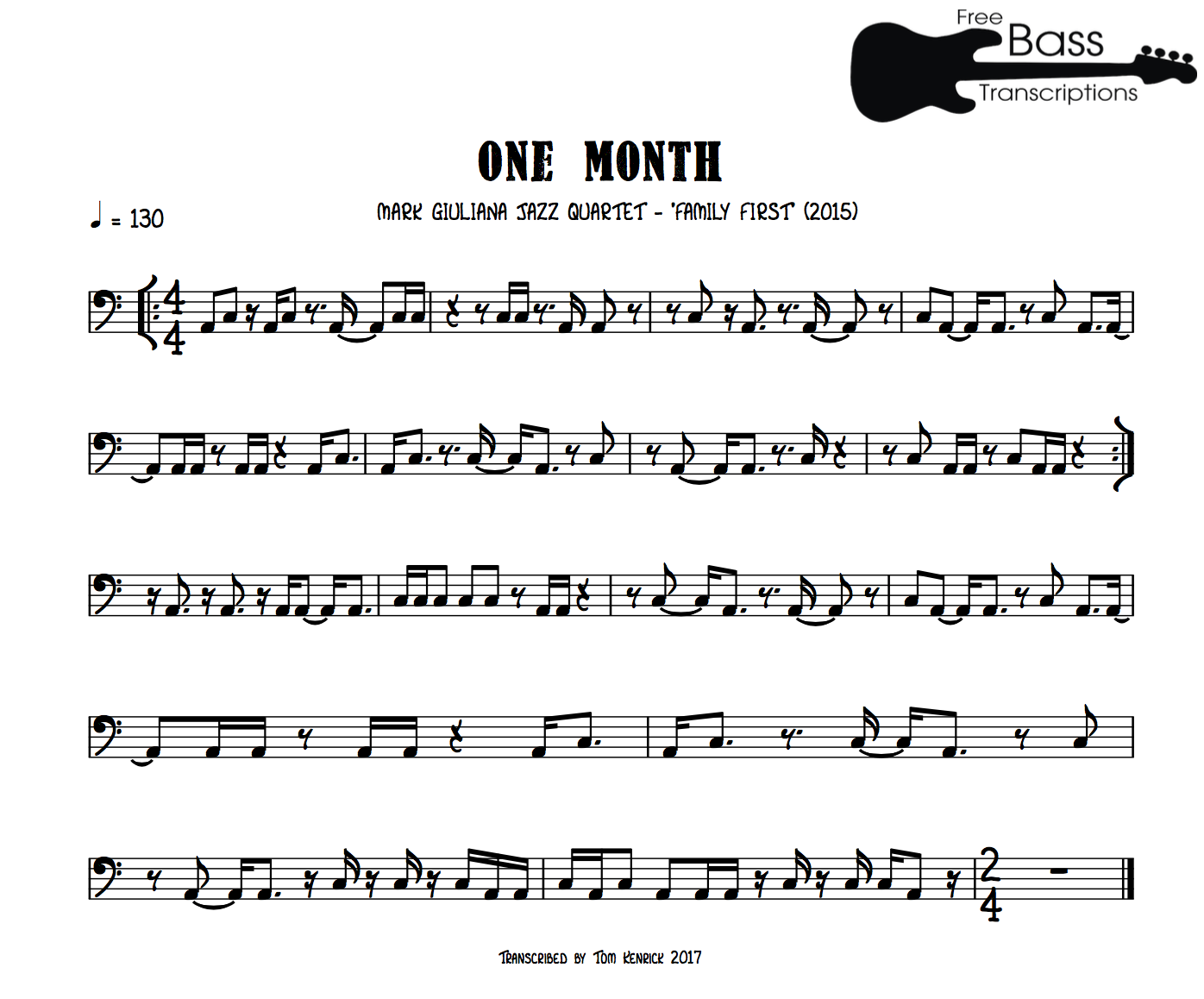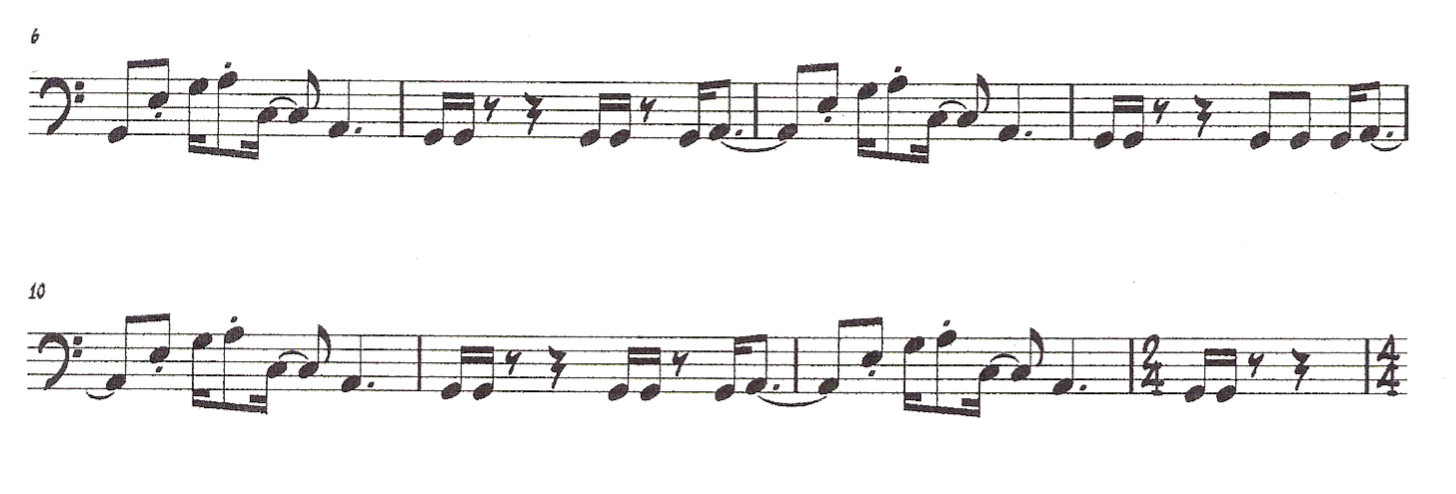Get out more, get more out of it
Confessions of a working bassist #37: I’m terrible at getting out to hear gigs. Maybe 3 times a year I’ll get my act together, check listings, book tickets and go and enjoy being in the audience rather than on the stage.
This post comes from one such occasion this time last year, when I saw that Mark Giuliana was coming to town – I’d heard lots of buzz about him from other musicians and was vaguely aware of his Beat Music project (featuring bass hero Tim LeFebvre) but had never actually bothered to listen to much of his output.
One of the most memorable moments of the gig involved a tune with a lengthy bass and drum intro that consisted of nothing but horribly syncopated unison stabs and didn’t appear to feature any repeating figures. After some Spotify surfing the following morning, it turned out that the song in question was ‘One Month’ from 2015’s Family First album – I realised yesterday that it had been on my transcription ‘to-do’ list for almost an entire year, and my brain was repeatedly nagging me to sit down and decipher what was going on:
It’s 2 notes in 4/4 time – how hard could it be?! Try sight reading this at 130bpm:

It’s a roast-up, right? Now, if you want a real challenge, attempt to memorise it.
Dealing with flyshit
I still vividly remember my first lecture at music college – I was 19 years old and had come from a small town with very little in the way of a music scene, so I thought I was pretty good. As soon as this was put in front of me I quickly realised that I knew nothing:


Having grown up on a solid diet of internet TABs and Hot Licks videos, my reading ability was somewhat lacking. I was determined not to be beaten by the little black dots, and by the end of the year I was one of the best readers in the class. How did I do it?
From zero to (reading) hero
My lectures didn’t start until 11am, so I resolved to get up at 7.30 every day and do a couple of hour’s work on my weaknesses – there were (and still are) many – with a particular focus on reading. I worked on rhythm separately from pitch and slogged my way through this riveting tome:

If you can read this book, you can read (almost) anything. And, if you can read it then you can also hear rhythmic figures elsewhere and write them down quickly There’s an entire blog post on it here.

